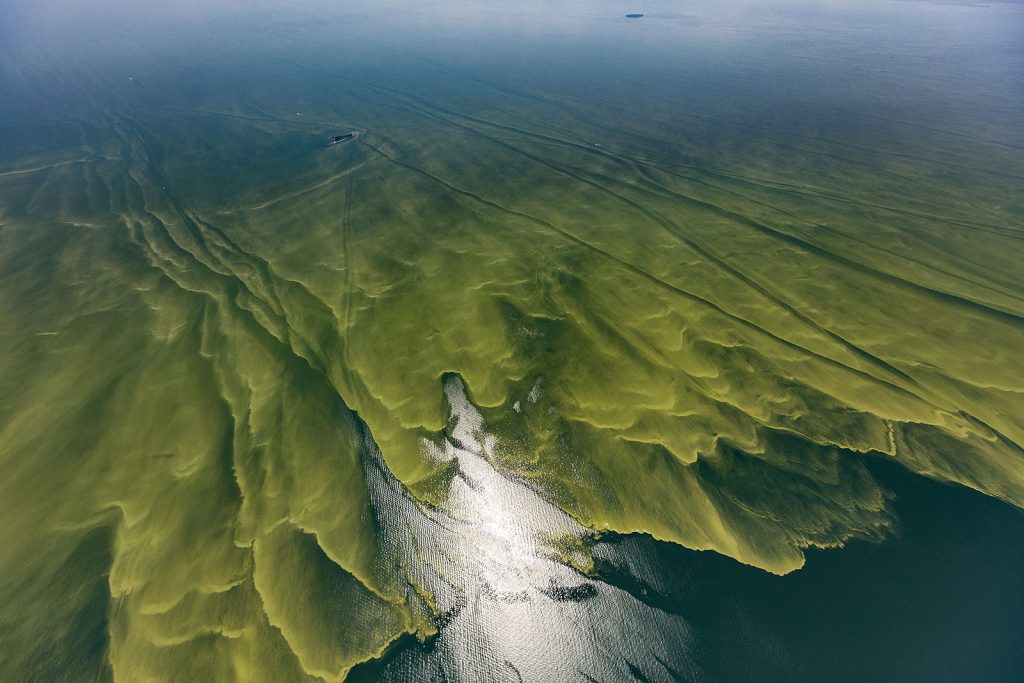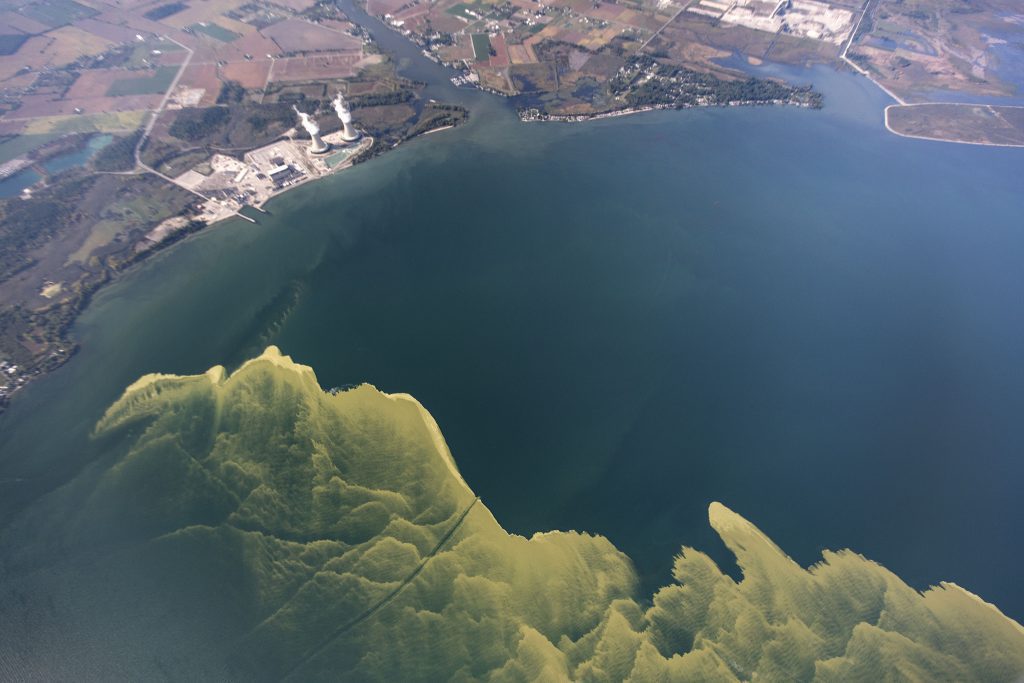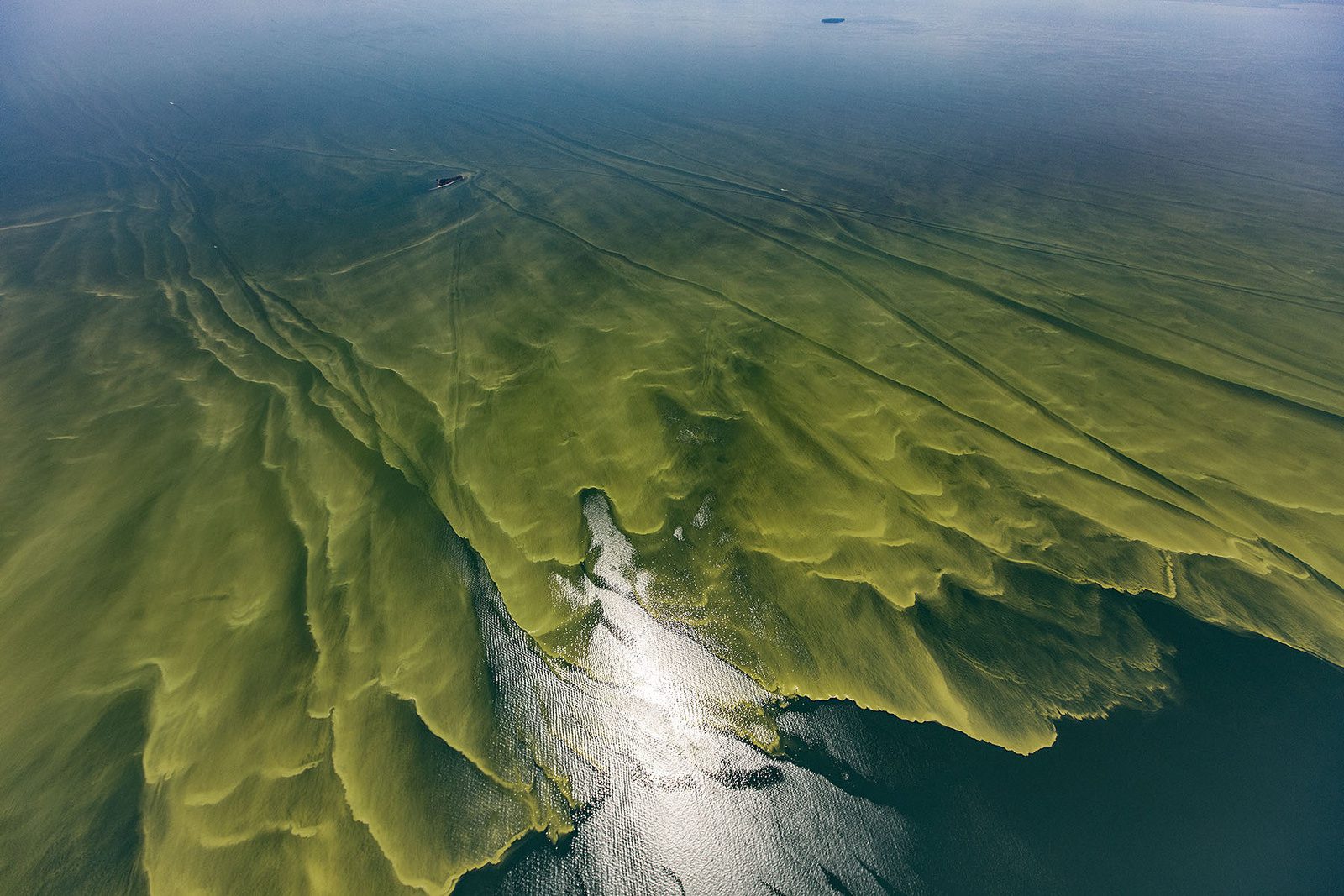Earlier this month, the Ontario and federal governments released a second draft of their plan to tackle algae blooms in Lake Erie. We’re happy to say this newest draft addresses several of our previous concerns, and includes a few of our recommended actions. However, we want to see even more before the plan is finalized in February.
Over the last decade, Lake Erie has suffered from increasingly frequent and severe algae blooms. The blooms are ugly, smelly, and sometimes toxic, and they put ecosystems, human health, and the local economy at risk. This year’s bloom spanned more than 1800 km2 — about three times the size of Toronto. This is no small problem.


Photo Credit: Aerial Associates Photography, Inc. by Zachary Haslick
Current plan does not address agricultural run off
While algae is a perfectly natural part of aquatic ecosystems, excess phosphorus in the lake can cause algae to grow out of control. Some of the sources of phosphorus entering the lake are sewage treatment plants, septic systems and runoff from urban streets. However, the single biggest source of phosphorus is runoff pollution from agricultural lands.
Unfortunately, when it comes to actions targeting agricultural sources of runoff pollution, this most recent draft plan still falls short.
If the Ontario and federal governments are committed to ensuring a healthy, clean Lake Erie, they need to do more to address runoff pollution from farms, including:
- New common-sense regulations, that reduce runoff pollution and maintain farm productivity;
- A commitment to enforce existing rules; and
- Adequate incentive programs for farmers.
Regulating common-sense practices for reducing runoff pollution would help the health of the lake, and provide other on-farm benefits like improved soil health. Mandating soil testing and banning the application of fertilizers and manure to frozen or waterlogged ground, are great places to start.
Governments must also make sure they’re enforcing existing rules. In 2013-2014, only three per cent of the farms with nutrient management plans were inspected. Fifty per cent of those farms weren’t following the rules. Furthermore, half of those posed a risk to the environment and human health. Clearly, status quo isn’t enough.
Finally, we recognize that there will be costs associated with improving the way farms manage phosphorus. Governments must provide cost-share programs to help farmers in the Lake Erie basin implement best management practices on their land to reduce runoff pollution.


Together, we can stop algae blooms on Lake Erie
We can solve the Lake Erie algae problem, and keep the lake clean, not green. In fact, we’ve solved it before. But governments need to act — and there’s no time to waste.
You can help too by taking action, and learning more about actions you can take at home to reduce nutrient runoff.







